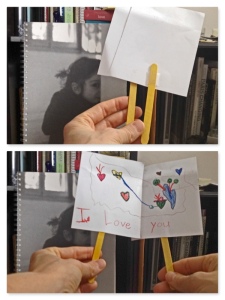I just read the Genius of Play’s report on “Fostering innovation and Creativity through Play,” cohosted with the Smithsonian Lemelson Center at the National Museum of American History, April 25, 2018.
I love the questions, ideas, hopes, and dreams they express in their event press release, and their event report.
Their plan was to “explore how play serves as a catalyst for creativity and innovation.” What a great plan! Remarkably, they didn’t just explore on their own, for their own information. They invited experts (including me!) to collaborate with them, and hosted a free event to share our thoughts. They even extended invitations to members of Congress, congressional staff, and staff at the Department of Education.
If you get a chance, read the report and check out the Genius of Play website. Until then, I hope you are inspired by our definitions of play, and the conclusion to the Genius of Play report.
“What is play?”
“Play is joy – doing things that you love to do. And I think play changes over the periods of your lifetime. I also would say for young children, play is the work in how they live their lives.” (Jeri Robinson, Boston Children’s Museum)
“If it makes you happy … It can’t be anything but play.” (James McLurkin, Google)
“Play is a way of interacting with the world that is both fun and powerful. What makes play powerful is it allows our brains to be open and to explore possibility, entertain new ideas, learn and take risks, and learn that failing isn’t the end, but it’s really the beginning to start a new game, stronger and smarter.” (Molly James, Kent Place School)
“Play is anything that we see as open-ended and unconstrained in the hands of a child. And the tools can be anything: they could be toys; they could be robots; they could be books; they could be nothing; they could be out in the garden, but that’s all play.” (Vikas Gupta, Wonder Workshop)
Genius of Play Report Conclusion:
“The connection between play and invention is real but in order to see a correlation, children need to be allowed to flex their creativity through play. By bringing more play to the school curriculum, giving parents the confidence to play with their children, and helping our society understand and value the benefits of play, we can help children develop the qualities they need to become the next generation of inventors.”
Good stuff, right? It was an incredible evening, and the ability to reflect a bit more about it through the report is pretty awesome.
I’m not sure if the members of Congress, congressional staff, or staff at the Department of Education attended. At first that bothered me. But, now, not so much, because I think the most important people made it to the event.
Parents, educators, toy inventors, and others invested in creativity, innovation, and learning, filled the room. We are the people in the classrooms, museums, after school programs, and homes. In some ways it’s most important for us to hear the ideas, read the reports, and believe in the power and purpose of play and creativity in learning and innovation.

I read a recent Ron Clark tweet which stated “As we start a new school year, I hope every teacher will take a moment to reimagine what education can and should be for every child. Be magical! Make possibilities a reality! #betherevolution”
I agree, let’s be the revolution our kids, and our world, need and deserve! Let’s make play, creativity, joy, inventiveness, and innovation possible. We can do it. We can make them a reality in our learning spaces. We can give our students the opportunity to “flex their creativity in play.” We can help others experience and understand the value of play — for all of us.
Let’s stand in our power. Let’s be the magical creatures we are. Let’s be the revolution!
____________________________________________________________________________________________
A link to the report can be found on the Genius of Play website, along with a ton of great information and resources. Or, if you prefer, you can download a pdf of the report – Raising a Generation of Inventors: How Play Fosters Creativity and Innovative Thinking in Children.



